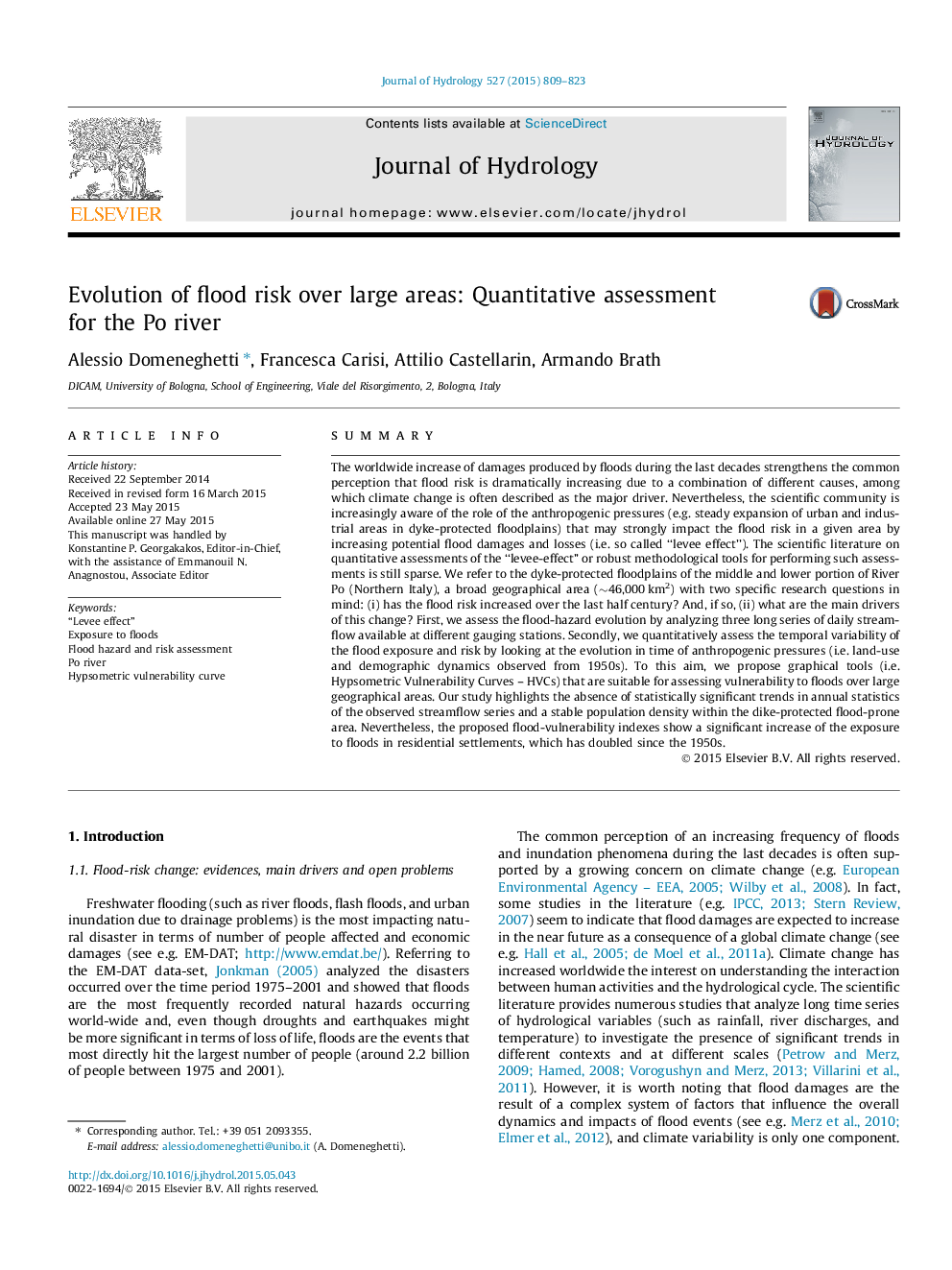| کد مقاله | کد نشریه | سال انتشار | مقاله انگلیسی | نسخه تمام متن |
|---|---|---|---|---|
| 6411188 | 1629923 | 2015 | 15 صفحه PDF | دانلود رایگان |
- We investigate the evolution of the residual flood-risk during last 50Â years.
- There are not any evidence of statistically significant changes in the flood hazard.
- Changes on flood risk are ascribed to an evolution of the exposure to floods.
- We use the Hypsometric Vulnerability Curves for the assessment of flood damages.
- Direct damages attributable to urban buildings doubled during the last half century.
SummaryThe worldwide increase of damages produced by floods during the last decades strengthens the common perception that flood risk is dramatically increasing due to a combination of different causes, among which climate change is often described as the major driver. Nevertheless, the scientific community is increasingly aware of the role of the anthropogenic pressures (e.g. steady expansion of urban and industrial areas in dyke-protected floodplains) that may strongly impact the flood risk in a given area by increasing potential flood damages and losses (i.e. so called “levee effect”). The scientific literature on quantitative assessments of the “levee-effect” or robust methodological tools for performing such assessments is still sparse. We refer to the dyke-protected floodplains of the middle and lower portion of River Po (Northern Italy), a broad geographical area (â¼46,000Â km2) with two specific research questions in mind: (i) has the flood risk increased over the last half century? And, if so, (ii) what are the main drivers of this change? First, we assess the flood-hazard evolution by analyzing three long series of daily streamflow available at different gauging stations. Secondly, we quantitatively assess the temporal variability of the flood exposure and risk by looking at the evolution in time of anthropogenic pressures (i.e. land-use and demographic dynamics observed from 1950s). To this aim, we propose graphical tools (i.e. Hypsometric Vulnerability Curves - HVCs) that are suitable for assessing vulnerability to floods over large geographical areas. Our study highlights the absence of statistically significant trends in annual statistics of the observed streamflow series and a stable population density within the dike-protected flood-prone area. Nevertheless, the proposed flood-vulnerability indexes show a significant increase of the exposure to floods in residential settlements, which has doubled since the 1950s.
Journal: Journal of Hydrology - Volume 527, August 2015, Pages 809-823
